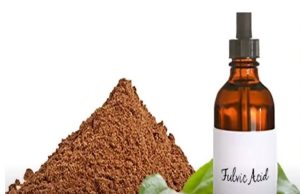Your skin needs to be well-cared for. However, entering a beauty shop or even
the skincare section of a pharmacy may be immediately overwhelming. It’s
difficult to determine which cosmetics you truly need when so many of them
promise to make your skin look amazing.
Each person’s skin type and goals should be taken into account while designing
a skincare routine. Your skin can look and feel better with a proper regimen, but
it doesn’t have to be difficult.
What information is required before starting a skin-care routine?
Knowing your skin type and if you have any pressing issues you want to address
is vital before deciding what to include in your skin-care routine. Also, keep in
mind that everyone has a different regimen; what works for your friends, family,
or randos online might not be the ideal option for you.
Consider how your skin behaves without any makeup or other items on it a few
hours after taking a shower to determine your skin type.If your skin occasionally
appears glossy or greasy, you most definitely have oily skin. It is advisable to
gravitate toward skin care for more sensitive, dry skin if you frequently get
eczema and your skin become extremely dry during the chilly winter months.
The majority of people have a mix, with characteristic greasy regions on the chin
and nose. Additionally, it’s conceivable that you don’t have any of these
conditions, in which case the majority of skin-care items are safe to apply to your
skin. Understanding your skin type can help you choose products that will
successfully address any additional skin issues you may have while managing
dryness and oiliness.
What constitutes a skin-care routine’s fundamental steps?
Although there is a recommended skin-care regimen sequence that helps
guarantee the products you use will be most effective, skin care doesn’t have to
be difficult if you don’t want it to be. Cleansing, moisturizing and using sunscreen
(+SPF 30) are the three fundamental phases of a skin-care program. These three
steps should be part of your morning skincare routine: washing with a cleanser,
applying moisturizer, and applying sunscreen.
When choosing a sunscreen, you may choose between chemical and physical
sunscreens. Chemical sunscreens contain substances like avobenzone, which
absorb sunlight like a sponge and then release it as heat. Physical sunscreens,
sometimes referred to as mineral sunscreens, work by constructing a barrier out
of mineral ingredients such as zinc oxide or titanium oxide to filter the sun’s rays.
Start using these three items in the morning:
Cleanser: Even though your face seems clean when you wake up, it is still
advisable to wash it with a mild, unmedicated cleanser that will remove dirt
without overdrying the skin.
Antioxidant: You’re looking for an antioxidant cream, serum, or oil that has
antioxidants like vitamins C or E or ferulic acid. Antioxidants can moisturize and
brighten your skin, according to studies. They also provide defense against
environmental contaminants that might harm the skin.
Sunscreen: To shield your skin from UV rays, choose a product with at least
SPF 30. This may already be present in the cream you applied in the previous
phase, the concealer you will apply next, or the foundation you will apply.
Hydrafacial treatment- every 4 to 6 weeks
What is a hydrafacial? -The hydrafacial is now one of the most efficient non-
invasive skin resurfacing techniques. It incorporates cleaning, exfoliation,
extraction, hydration, and antioxidant protection to eliminate pollutants and dead
skin cells while also providing nourishing serums to the skin. An appearance
boost from a Hydrafacial includes:
Acne-prone, oily skin
Arid skin
Variable skin tone
Wrinkles and fine lines
Hyperpigmentation
You concentrate on cleansing and healing your skin at night. Here’s how to go
about it:
Remover of makeup: It’s a good idea to use a makeup remover first because
the majority of cleansers won’t completely remove our makeup. Wipes, micellar
water, and balms are a few things that help remove makeup.
Cleanser: You may either use the same mild cleanser that you use in the
morning, or you can choose one that is more suited to your skin type. Salicylic
acid or benzoyl peroxide face washes may be beneficial for acne-prone skin.
Something with an alpha hydroxy acid, like glycolic acid, that brightens the skin
and might assist with pigmentation, might be chosen by a person in their 30s or
The 40s.
Toner: If you wash your face without first removing your makeup, a toner wipe
can take up any extra debris and makeup that your cleanser missed. This choice
is advised by specialists for those with more oily skin types.
Some toners include alcohol, which can strip your skin of its natural oils, causing
dryness or irritation.
Night cream: Apply a vitamin A-based night cream as the last step of your daily
regimen to help the skin regenerate new collagen and maintain its youthful
appearance. Utilizing one that includes tretinoin, retinol, or adapalene is advised.
You may top it off with a ceramide- or hyaluronic acid-containing moisturizer if it
dries out your skin in any way.
It goes beyond the cosmetics you use on your face
It’s critical to keep in mind that without proper care from the inside out, no product
on any shelf will offer you gorgeous, glowing skin. If you aren’t getting enough
sleep (yes, beauty sleep is a thing), controlling your stress, and following a
healthy, balanced diet, your skin won’t be at its best.
Apart from this if you are interested to know more Buying a Skincare Range of Products then visit our fashion category.














